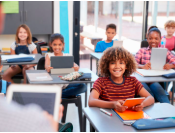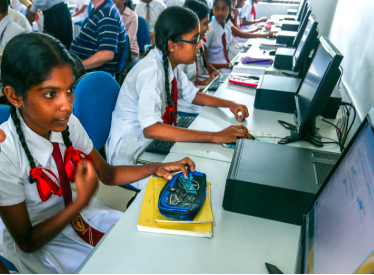Technology has opened new doors for students of all abilities, making learning more accessible and adaptable. For students with disabilities, EdTech (Educational Technology) tools are more than just convenient—they are essential bridges to learning opportunities that support diverse needs and talents.
Removing Barriers with Digital Tools
Many traditional classrooms present challenges for learners with mobility, visual, hearing, or cognitive differences. Educational technology helps remove these barriers through tailored features such as screen readers, speech-to-text programs, interactive learning platforms, and captioned video content.
For example, students with visual impairments can access course material through audio readers and Braille-compatible devices, while those with hearing differences benefit from real-time transcription software and video captions. These tools promote independence, allowing learners to engage with content in a format that works best for them.
Personalized Learning for Every Student
EdTech makes personalized learning easier to implement. Adaptive platforms adjust to each student’s pace and skill level, helping those with learning differences feel more confident and less overwhelmed. Gamified apps and visual learning tools make lessons more engaging, especially for students who thrive with alternative formats.
These technologies also support educators by providing insights into student progress. Teachers can track learning trends, adjust strategies, and deliver meaningful feedback, which is especially important in inclusive classrooms.
Communication and Collaboration Tools
For many students with disabilities, expressing ideas or interacting with peers can be a challenge. Fortunately, communication tools such as symbol-based messaging apps, voice input software, and interactive whiteboards encourage student voice and participation. They help bridge communication gaps, support social-emotional development, and foster community inclusion.
Group-based learning platforms, including forums and chat-enabled LMS (Learning Management Systems), also allow all students to contribute at their comfort level—whether asynchronously or through real-time collaboration.
Supporting Educators and Families
It’s not just students who benefit. Teachers and families play a vital role in guiding learners through their education. EdTech solutions now offer teacher dashboards, parent portals, and resource libraries that make it easier to support students’ learning journeys. These tools allow consistent communication between home and school, encouraging a team-based approach to education.
A Step Toward More Inclusive Classrooms
As awareness and innovation continue to grow, EdTech solutions are helping to create more inclusive and empowering classrooms. Whether a student faces physical challenges, neurodiverse needs, or learning delays, these tools bring tailored support and help learners thrive in both academic and social environments.
Investing in accessible technology is more than an educational decision—it’s a commitment to equity, inclusion, and the success of every student.














